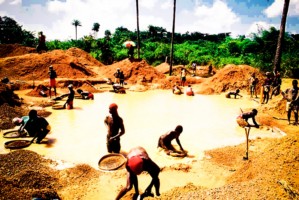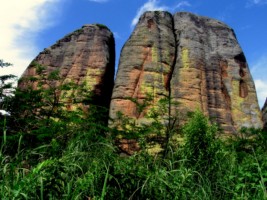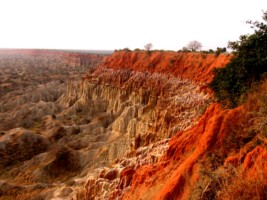Quick Facts: Angola
- Angola covers a land area of 2 million square kilometers, the seventh largest country in Africa.
- The total population is 18 million people.
- The currency is the kwanza, which is divided into 100 centimos. The US dollar is also widely accepted.
- Up to 59% of the population lives in urban areas.
- The capital city is Luanda, with 4.5 million people.
- Luanda is the world’s most expensive city for foreigners.
- The country is divided into 18 provinces.
- The climate is tropical with a distinct dry and wet season. Summer temperatures average 21 degrees Celsius, winter temperatures average 16 degrees Celsius.
- Portuguese is the official language. Several other African languages are spoken by a minority of the population.
- The majority of the population is Christian (Roman Catholic and Protestant).
- Angola uses the metric system.
- Electric Current is 220 Volts.
- Time zone is GMT + 1 Hour.
- Angola was a Portuguese colony until independence in November 1975.
- A civil war raged in the country for 27 years, ending in 2002.
- Angola has one of the world's fastest growing economies, driven almost entirely by oil production.
- Diamonds and oil make up 60% of Angola's economy.
- Basketball is Angola's favourite sport.
Introducing Angola
The first thing that comes to most people's minds when they think of Angola is the devastating civil war that raged in the country for almost three decades, ending in 2002. The country has a reputation for being a war-ravaged state rife with corruption, land mines and a crumbling infrastructure. Despite these shortcomings, Angola has some of the most beautiful, unspoilt national parks in the world and miles of exquisite tropical beaches. If you look beyond the country’s violent past and high levels of poverty, you will find a place of staggering natural beauty.
Climate
Located along the western Atlantic coast of Southern Africa, Angola is sandwiched between Namibia in the South and the Republic of the Congo in the North. The climate is characterized by lush, wet tropical jungle in the North and a cooler and drier interior. The area along the coast is more arid due to the influence of the cold Benguela sea current and proximity to the Kalahari desert with a climate similar to coastal Peru. Temperatures can get very high in Angola so the best time to visit the country is during the cooler drier months from June to September.
History
The Portuguese arrived in Angola in the late 15th century, establishing a small trade port to facilitate travel into the interior of Africa. For the next 500 years the Portuguese retained power in Angola, using the country as a slave pool for their sugarcane plantations in Brazil and mining the country for its diamonds and other raw materials. Demands for independence provoked an armed conflict starting in 1961 that became known as the "Colonial War". After many years of struggle the Portuguese finally granted independence on the 11th of November 1975.
Unfortunately, gaining independence did not bring peace to Angola but instead sparked a bitter civil war between three nationalist movements that only ended in a ceasefire in 2002. The war claimed 1.5 million lives and left the country’s landscape littered with mines and its infrastructure in ruins.
Although the political situation in Angola has stabilized and the country is enjoying a period of peace, the current president, José Eduardo dos Santos, has failed to institute a proper democracy with regular elections.
Economy
Angola has one of the world’s fastest growing economies due to oil production. The Portuguese discovered oil in the country in the 1950s and production currently stands at 1.6 million barrels a day, making Angola the second largest oil producer in sub-Saharan Africa after Nigeria. Despite its vast oil wealth and gas reserves, most of Angola’s population remains extremely poor due to corruption and misuse of funds. In 2005 Angola was ranked as one of the top 10 most corrupt countries in the world.
Angola’s economy is still recovering from the civil war and its mineral resources, hydroelectric potential, and rich agricultural land have not been harnessed to lift the country out of poverty. Aside from crude oil, Angola’s other exports are diamonds, refined petroleum products, coffee, sisal, fish, timber, and cotton.
Must see places
Luanda, the capital city, is situated on the coast and is Angola’s main seaport. It is the largest city in the country with close to five million people. Since the end of the civil war in 2002, there has been a massive construction boom in Luanda in an effort to rebuild the city, aided by oil and diamond revenues. Visit Luanda to experience the quintessential Angola. Take a stroll along one of its extensive beaches, visit colonial relics, or enjoy the bars and restaurants in the world’s most expensive city.
After Luanda, take a drive to Kissama National Park, 70 kilometres south of the capital. Kissama is the country’s only functioning national park. The wildlife in the other parks was decimated during the Angolan Civil War. Efforts are currently underway to restock the reserve. In 2001 a group of South Africans and Angolans started a project called "Operation Noah’s Ark" to airlift animals from South African game parks to Kissama. At 12,000 square kilometres, the park is one of the biggest in Africa.
The Benguela Railway is 1,344 kilometres long and runs from the port of Lobito on the coast to the town of Luau on the eastern border with the Democratic Republic of Congo. The Portuguese built the railway over a century ago to transport minerals from the Congo to Europe. The railway connects to the Congo, to Zambia and to South Africa. Take a leisurely train journey on the Benguela Railway to experience the country’s rugged interior.
The coastal city of Namibe is popular for its beautiful sandy beaches. It is located in south western Angola in close proximity to the Namib Desert. The arid terrain around Namibe was ill-suited to guerrilla warfare so the area remained relatively untouched by the civil war. The area is also popular for the nearby Iona National Park. Poaching has greatly reduced the amount of animals in the reserve but the park still boasts unique flora and awesome rock formations.
En route to Namibe in the Huila province is the Tunda-Vala Volcanic Fissure. The fissure lies at an altitude of 2,600 metres, delighting the traveller with a spectacular view from the rim of the great escarpment. Both Tunda-Vala and Namibe can be reached by flying to the city of Lubango, 160 kilometres from Namibe, and then catching a train to the coast.

.jpg)



.jpg)


